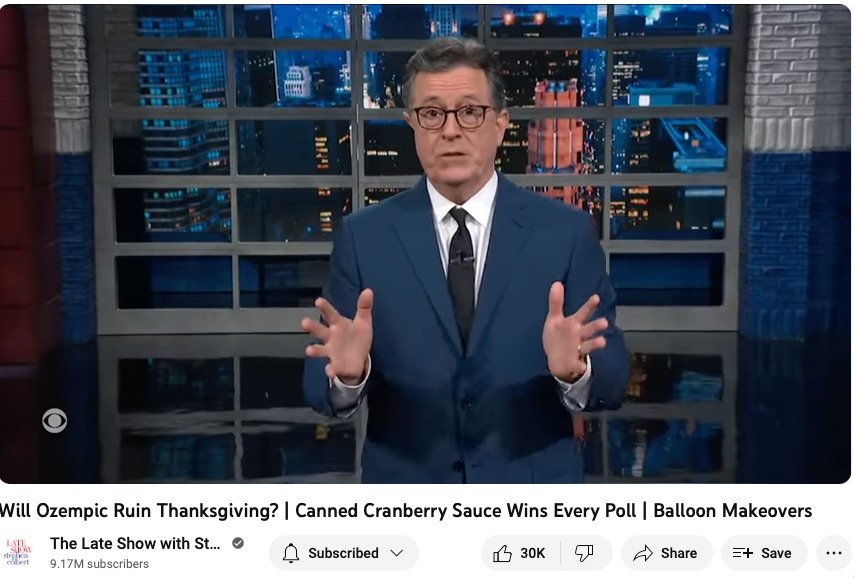Podcasting’s Multiplatform Imperative
This semester at NYU, I've had the unique opportunity to lead a pioneering course on the business of podcasting as an adjunct professor at NYU’s Steinhardt School of Culture, Education, and Human Development. The first course of its kind at a major university, the curriculum covers a wide range of critical topics, from the intricacies of ad technology and sales strategies to the nuances of content creation and performance metrics. We've been fortunate to welcome a roster of industry luminaries, including Edison Research President Larry Rosin, Triton's President John Rosso, Oxford Road's founder Dan Granger, sales expert Sarah van Mosel, General Manager of Freakonomics Radio Neal Carruth, along with podcast startup maven and Descript Community Manager Arielle Nissenblatt, and trusted Amplifi consultant and genuine marketing wizard Suzy Schultz. However, the learning is a two-way street. Viewing the media landscape, particularly podcasting, through my students' perspectives has illuminated a significant challenge facing many podcast creators today: convergence.
Their digital fluency is a testament to the expectation of seamless access to content, blurring the lines between different forms of media
One of the most fascinating revelations is the diversity in podcast consumption platforms among the students. Contrary to the binary perception of podcast listening primarily through a single app like Apple Podcasts or Spotify, the reality is more multifaceted. This insight was corroborated by a significant study we conducted earlier this year with Coleman Insights, focusing on YouTube's role in podcast consumption (see the webinar replay here).
Our students are engaging with podcasts in various ways: they're watching and saving snippets on TikTok, streaming episodes on Spotify, tuning in via YouTube, and discovering content through YouTube Shorts and various social media platforms. Their digital fluency is a testament to the expectation of seamless access to content, blurring the lines between different forms of media and challenging the traditional notions of podcast consumption.
Take a page from late-night
The critical nature of multiplatform content becomes even more apparent when we get out of the podcast box and examine other media. The evolution of late-night television is a great example. In an era where a plethora of online content challenges traditional TV viewership, late-night shows have adeptly embraced the multiplatform approach to maintain and even enhance their relevance.
Out of necessity, shows like 'The Tonight Show Starring Jimmy Fallon' and 'The Late Show with Stephen Colbert' became pioneers in this realm. They understand their audience is no longer just night owls; it extends to those scrolling through social feeds the following day. These programs tapped into a new audience demographic by segmenting shows into digestible clips spread across platforms like YouTube, Twitter, and Instagram. These snippets, often featuring celebrity interviews, stand-up bits, or unique games, are designed to capture the show's essence and appeal to the online audience on their chosen platform.
This strategy has been incredibly successful. Not only do these segments rack up millions of views, but they also act as gateways, drawing viewers back to the full-length show. The approach has been instrumental in keeping these programs culturally relevant, especially among younger audiences who predominantly consume content online. Furthermore, it demonstrates a keen understanding of the current media landscape, where content must be versatile and accessible across multiple platforms to make a lasting impact.
In much the same way, podcasters can learn from this strategy.
What should podcasters do?
For most podcasters, relying on a single platform for distribution is no longer sufficient. To truly thrive in the current digital ecosystem, most – but not all – content creators must adapt a multiplatform approach. This means understanding where your audience is and how they prefer to consume content, be it audio, video, short-form, or long-form, and then delivering your content to meet those preferences.
Podcasters thinking about how to grow and retain audience should have my students in mind and how they discover content.
As I have observed through my students at NYU, the future of media consumption is diverse and fragmented. Success in this new era requires an agile approach to creation and distribution that embraces the multiplatform imperative.
There is still a debate about what a podcast is and whether it must have an RSS feed. We’ll have to move beyond that. As TV sees its business model crushed by viewer choice, it now delivers content wherever there is audience to be found. Podcasters thinking about how to grow and retain audience should have my students in mind and how they discover content.
Can audio just be audio? Of course. But platform convergence is happening. Meeting the audience where they are is becoming more vital.


